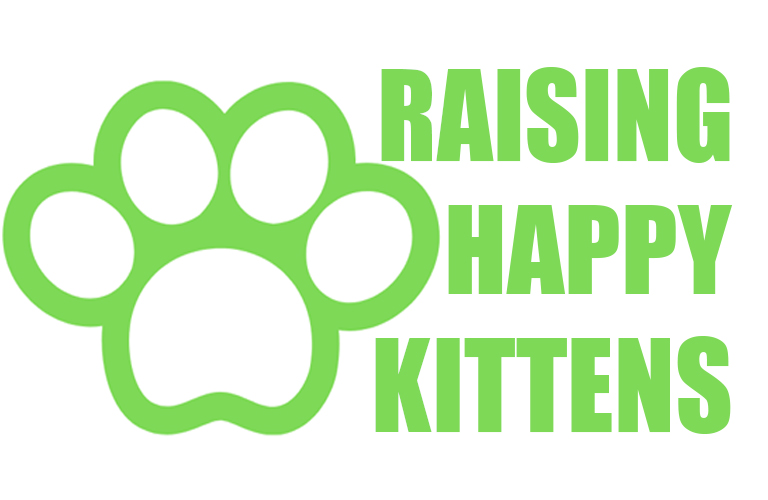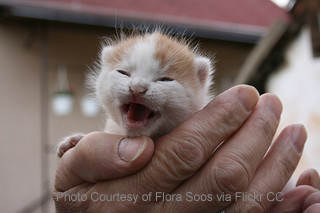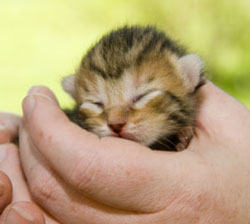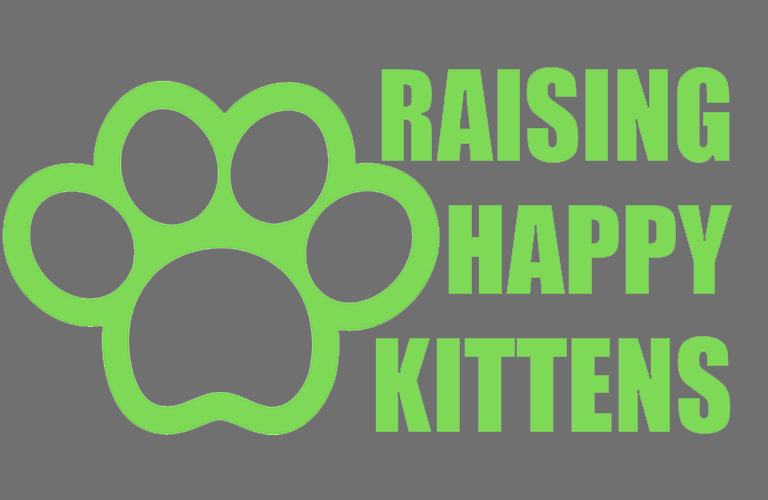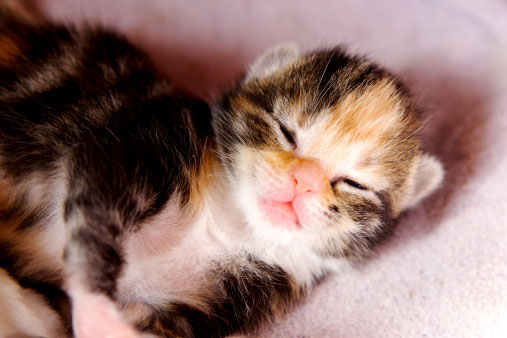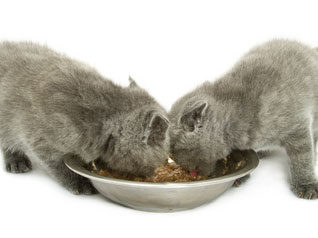Without a mother cat around, hand feeding newborn kittens is a must.
It’s not easy to care for them on your own, but it can be done with the right materials and know-how.
What to Use for Hand Feeding Newborn Kittens
You can learn how to begin bottle feeding kittens by hand or use an eye-dropper. If you’re careful, you can also use a syringe.
The benefit of the syringe is you can measure out the exact amount to begin hand feeding newborn kittens without guess-work.
The danger of a syringe is you have to plunge down, and if you don’t do it slowly and carefully the kittens could aspirate (choke) on the liquid.
In the case that a newborn is too sick or weak to nurse, a feeding tube will have to be inserted directly into his stomach, but you will need a professional to show you how to do this.
How to Begin Hand Feeding Newborn Kittens
 If using the bottle, syringe or dropper, place a small amount on the newborn’s tongue rather than drying to drip it continuously down his throat.
If using the bottle, syringe or dropper, place a small amount on the newborn’s tongue rather than drying to drip it continuously down his throat.
It’s better if he eats more slowly, even if it’s more time consuming for you!
If the formula comes out of the kitten’s nose, you will know you are giving it to him too quickly. Slow down the dropper delivery or get a nipple with a smaller hole.
If formula continues to come out of his nose, have the veterinarian check him for a possible palate problem.
Measuring the Formula for Kitten’s Weight
Weigh the kittens every day on a food scale. Each should gain 1/2 ounce every day for the first two weeks.
However, when hand feeding newborn kittens it’s better to give them less than more. If they aren’t gaining the appropriate amount of weight, it’s better to increase the daily amount of feedings, rather than the amount each feeding.
When hand feeding newborn kittens, refer to the following chart to make sure each one is gaining weight at the appropriate rate, based on their original birth rate:
[one_half]
Kittens Age (in Days)
1
5
10
15
20
25
[/one_half]
[one_half_last]
Ideal Weight of Kittens
2 ½ – 4 ¾ oz
3 – 7 oz
4 ½-9 ¾ oz
6 – 11 ¾ oz
7 ½-14 ½ oz
8 – 16 oz
[/one_half_last]
To keep their weight gain on track, in general, you will hand feed them 2 tablespoons of liquid for every 4 ounces of body weight per day.
Using KMR Milk Replacer for Kittens
KMR Milk Replacer, a commercial formula, comes in both liquid and powdered varieties for hand feeding newborn kittens.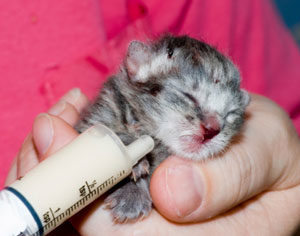
The liquid is more convenient and less prone to clumping, but it is less economical than powdered formula, since an opened can has a very short lifespan and must be thrown out within days.
Powdered can be mixed to the specific amount you need, but it can get “goopy” and may plug your dropper or bottle while hand feeding a newborn.
It may be worth experimenting to see which works best for you for hand feeding.
(Of course, if you have neither and the kittens have to be fed right away find out how to begin feeding newborn kittens with a homemade formula.)
Hand Feeding: How Often?
Until the kittens are two weeks old, feed them every 2 hours in a 24-hour period.
From two weeks until they are three weeks old, feed them every 3 hours.
Starting at 3 weeks old, hand feed them every 4 hours.
By 4 weeks old, you can begin weaning them by introducing them to solid food.
